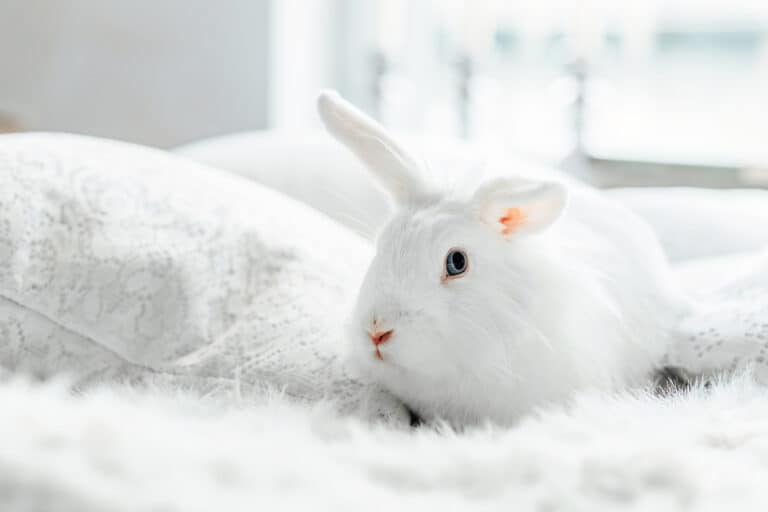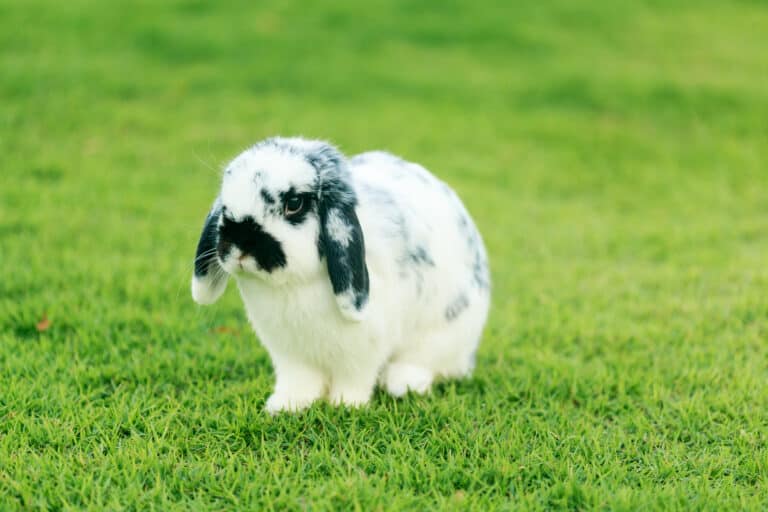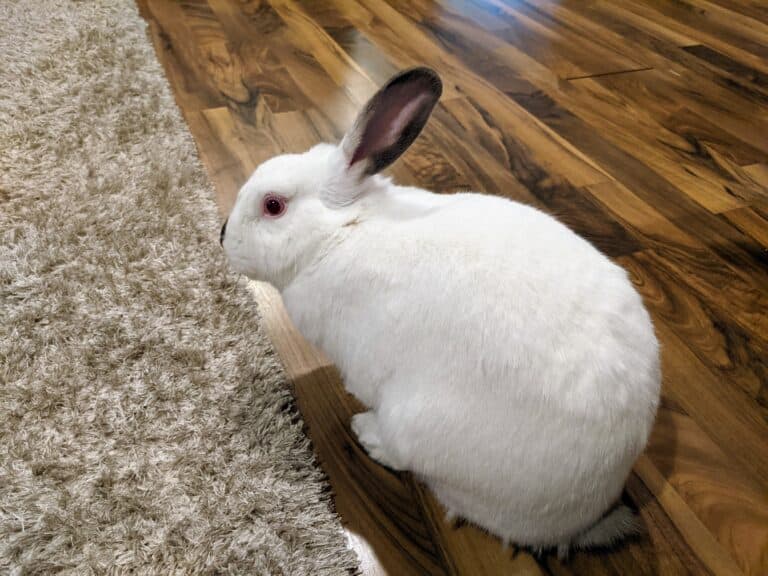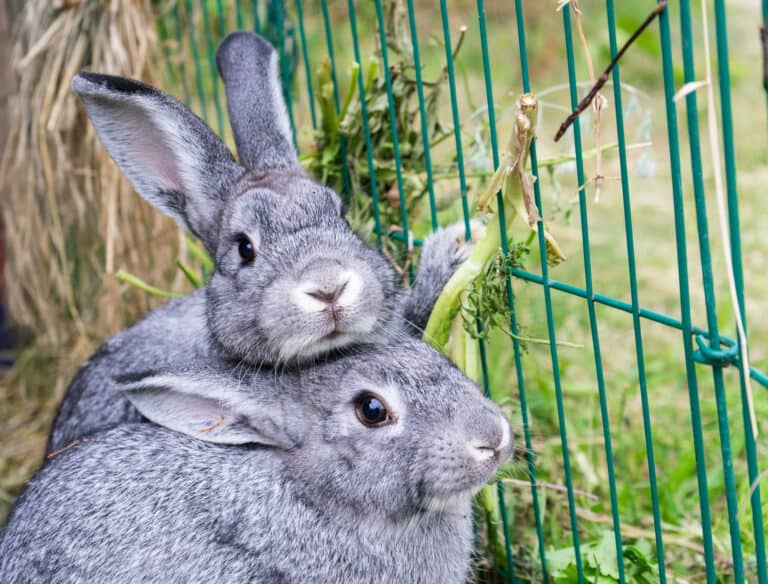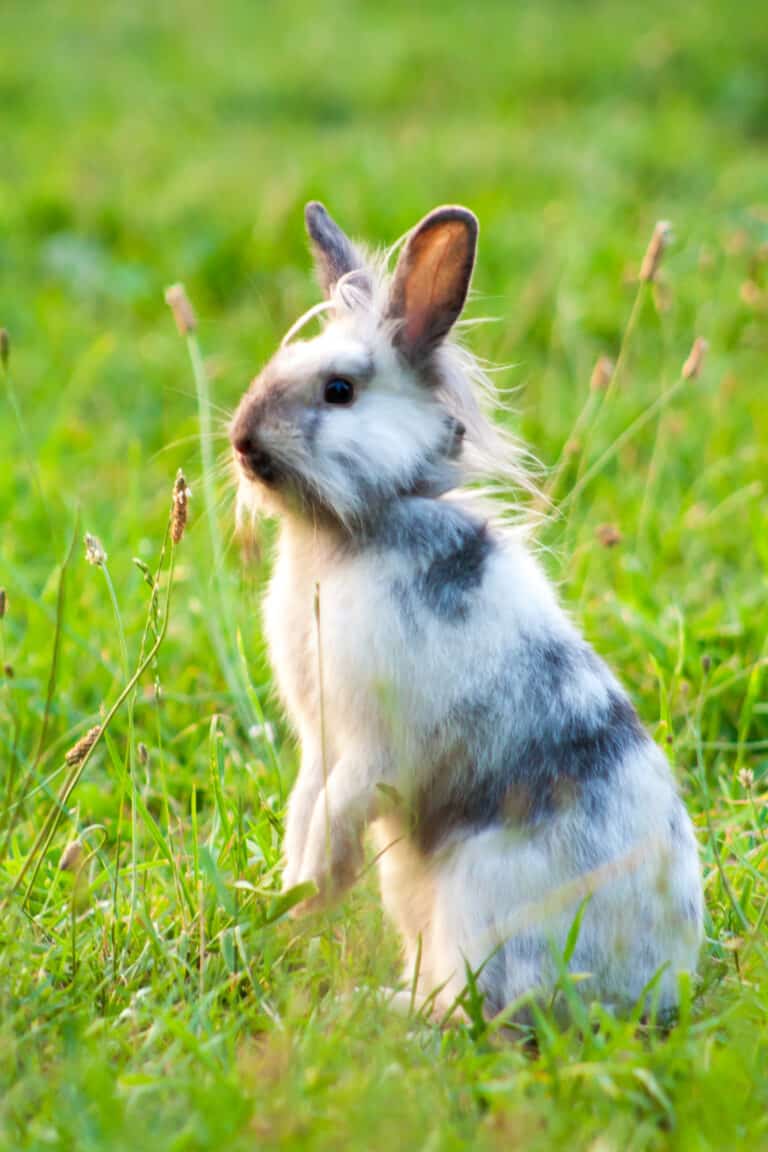How Long Do Holland Lop Rabbits Live?

These itty-bitty, floppy-eared bundles of fluff have skyrocketed in popularity as companion animals. They’re beloved by rabbit owners who want a pet bun that looks like a baby forever. But does the small size of Holland Lops affect their lifespan? How long do Holland Lop rabbits live anyway, and is it shorter or longer than larger rabbit breeds?
Let’s talk Holland Lops to see why they’re the top pick as pet rabbits and find out whether they’ll fit your heart and home.
All About Holland Lop Bunnies
The Holland Lop is a dwarf breed that has captured the hearts of many bun lovers. Recognized by the American Rabbit Breeders Association in 1979, this bunny type originated in the Netherlands in the 1950s.
Holland Lop rabbits resulted from the efforts of Dutch breeder Adrian de Cock, who combined the genes of the French Lop and Netherland Dwarf. Pairing the resulting bun with the English Lop led to the creation of the Holland Lop, which eventually became one of the most popular rabbit breeds. This holds true not just in the United States but across the globe.
People sometimes call them Mini Lop rabbits, but it’s worth knowing the two are entirely different breeds with distinct living and social requirements. Funny enough, even though “mini” is in the name, a Mini Lop rabbit is bigger than a Holland Lop bun.
Physical Characteristics of Holland Lop Rabbits
The unique looks of these lop-eared rabbits make them total heart-stealers. They’re famous for their adorable droopy ears. Instead of sticking up like normal bunny ears, those furry appendages flop down to the sides of their heads, giving these buns a perpetually sweet and gentle expression.
Holland Lops are like pocket-sized pets. They often weigh a featherlight 2-4 pounds, making them a perfect fit for those who want a bunny they can easily carry around.
Their fur is soft and plush, and it comes in a variety of colors. From solid shades like white, black, and chestnut to mixes of spots, stripes, and hues, there’s a Holland Lop for every taste.

Characteristics of Holland Lop Rabbits
Holland Lops have more going for them aside from their adorable looks. They have a sweet personality to boot. Being social animals to a T, they love attention and enjoy being held, cuddled, or petted, which makes them good pets and fantastic companions, even for young children.
That said, you should always keep an eye on your little ones when they’re playing with your furry friend. Because Holland Lops are such small animals, they can easily get hurt from unintentional rough handling.
How Long Do Holland Lops Live?
The challenge with having pets is that, despite your excellent care, they often leave too soon. Fortunately, dwarf rabbits like Holland Lops stick around longer than their larger counterparts (especially the giant ones).
A Holland Lop bunny can live up to 10 years, although 6 to 8 years is the average lifespan. The oldest known Holland Lop bunny made it to 15 years. There’s even a story, though not officially confirmed, of another one who lived to the ripe old age of 17 years.
Compare that with the oldest rabbit ever recorded – an Aussie bunny that made it to a whopping 18 years – and you can see that Holland Lops can hold their own in defying the march of time.
Health Conditions That Can Affect How Long Holland Lop Rabbits Live
We have no doubt that, like most pet owners, making sure your bun enjoys a healthy life is a top priority. Being aware of the possible health problems your Holland Lop might face will help you keep an eye out for any potential issues.
Here are health conditions lop rabbit breeds commonly face:
1. Otitis
Because of their floppy ears, buns from the Holland Lop breed can experience ear infections, such as otitis, more than other breeds of rabbits. The extra fold in their outer ear is the culprit. In this area, wax and other debris can build up and become breeding grounds for fungi and bacteria.
An ear infection is not just uncomfortable for your fluffy pal, but it can also cause other issues, such as impaired hearing and loss of balance.
2. Uterine Cancer
This is the most common cancer form in female rabbits. Not just Holland Lops but different rabbit breeds can get uterine cancer. It’s often linked to hormonal factors, primarily estrogen. That’s why unspayed female buns have higher risks of developing this form of cancer.
3. Parasitic Infestation
Parasitic infestations can be a real hassle for both domestic and wild rabbits. Those pesky parasites can affect a bun’s overall health and even impact his life expectancy. Mites often cause intense itching and hair loss, making a rabbit feel miserable.
Meanwhile, an infestation of the E cuniculi parasite is potentially life-threatening as the organism can damage a rabbit’s vital organs, such as the brain and kidneys. Head tilt is one sign that the parasite has affected a bun’s nervous system.
4. Dental Issues
A bun’s pearly whites keep growing throughout his life. As such, your rabbit needs a healthy diet to ensure that those perpetually growing teeth don’t get too long. Overgrown teeth can cause a host of dental issues, such as mouth abscesses and ulcers on the tongue and cheek.

Factors That Affect How Long Holland Lops Live
Small rabbits tend to live longer than larger breeds, which is good news for Holland Lop owners. But while genetics play a role in determining how long Holland Lop bunnies live, their lifespan doesn’t depend on their DNA alone. Other factors can help increase the time you have with your furry friend.
Spay or Neuter Your Rabbit
Uterine cancer can befall intact female rabbits. Spaying lessens the chances of cancers of the reproductive system, so it makes sense to have your pet altered.
It’s a relatively minor surgery, although it still comes with some risks, particularly those associated with the use of anesthetics. Discuss the pros and cons with your rabbit-savvy vet to make an informed decision.
Spaying costs range between $65 and $600, depending on your area’s prevailing vet fees.
Meanwhile, neutering a male bun can help add to his years by lowering his chances of getting testicular cancer. Also, it tones down his aggression level, making it less likely for him to sustain injuries by fighting with other rabbits.
Neutering costs can range between $50 and $200.
Keep Your Bun Indoors
Indoor rabbits enjoy many perks. Less exposure to extreme temperatures and fluctuating weather is just one. Another advantage is that indoor living brings fewer health risks since they’re not exposed to diseases or parasites from the great outdoors.
Because of their status as prey animals, rabbits can get jumpy when they sense predators around. In this regard, buns staying inside have less to worry about, as homes are typically predator-free zones.
Provide a Proper Diet
Hay should be the mainstay of your bun’s diet. Timothy and Oat Hay make excellent choices. Supplement this with fresh vegetables and leafy greens, and you’ll likely have a well-nourished pet.
Don’t forget to keep a constant supply of fresh water in the bunny cage. Rabbits can drink out of water bowls or bottles, depending on what you and your pet prefer.
Reduce Your Rabbit’s Stress
Rabbits are sensitive creatures and can easily get stressed out. Even something as simple as a dog barking can make your pet go into full-on fight or flight mode. That’s not great if it happens too often.
To reduce your bun’s stress level, keep his living space away from other pets. Rabbits can get along with cats or dogs, but you should supervise all interactions between your fur babies.
Give Your Rabbit’s Brain a Workout
You might find it surprising, but rabbits can get lonely or bored if they have nothing to do. So, aside from exercising your bun physically, keep his mind engaged, too. Bun-friendly toys and puzzles are excellent sources of mental stimulation.
But do you know what will make your rabbit’s day? Your presence. So spend as much quality time as you can with your furry companion. Cuddle, play, or groom him. He’ll love the social bonding.
Holland Lop rabbits not only make great pets, but they tend to live longer than other breeds. That means you’ll have more time with your fluffy companion. But you can add more years to this rabbit breed’s lifespan by giving him proper care, love, and attention.
More on Rabbit Breeds
- How Big Do Holland Lop Rabbits Get? Complete Guide
- How Long Do Flemish Rabbits Live: Giant Breed Facts
- Are Rabbits Rodents? Find Out More About These Small Mammals
- How Long Do Holland Lop Rabbits Live?
- All About Bunnies with Red Eyes: Why and How They Get Red Eyes
We hope you enjoyed this post! If you did, will you give it a share or two 🙂 Thank you! ~from Every Bunny Welcome


